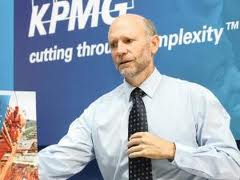Despite the slow economic recovery to date, many global engineering and construction companies have a bullish outlook
Having repositioned their businesses during the recent global economic downturn, with sustainable models better suited to manage risk and expand into new markets and services, many global engineering and construction (E&C) firms are leaner, stronger, and more strategic, a recent study by KPMG International has found.
Findings from the KPMG Global Construction Survey, ‘Adapting to an Uncertain Environment’, indicates that the lingering economic downturn and associated constraints have generated a growing movement among global E&C companies to create stronger, more resilient business models that can weather change and manage risk; 77 per cent of respondents said they have in place sophisticated systems to effectively manage risk.
Another outcome of the opportunity to redefine their businesses is that many of the global players are creating new integrated services offerings or expanding overseas to increase market opportunities. South African construction companies are looking to the rest of Africa for growth and opportunities.
“The willingness of contractors to move into new markets, and possibly to evolve their value proposition, could be the difference between thriving and merely surviving,” said Geno Armstrong, international sector lead for KPMG’s Engineering and Construction practice. “With margins unlikely to rise for traditional business, such a repositioning could be vital.”
Cutting costs, cutting prices, calls for more public sector initiatives
Amongst the key indicators, margins are shown to have taken a cut over the last year, as most respondents said they had to reduce prices. However, the impact has been lessened due to cost-cutting measures. Looking ahead, more than 30 per cent of respondents said they are bidding on new projects with lower margins but that factor is offset by the sentiment that any recent backlogs (secured orders) are predicted to rise dramatically.
Meanwhile, government stimulus initiatives around the world have had varying levels of success, with more than 35 per cent of respondents from Asia Pacific stating that stimulus efforts have had a significant impact. In contrast, the majority of respondents from the Americas and Europe, the Middle East and Africa said that stimulus packages did not improve market opportunities.
Improved risk and compliance measures, better economic conditions
With risk management an even higher priority in the new environment, most respondents said they continue to improve efforts with new programmes to train employees, analyse their bidding and planning processes, and develop a more formal risk approach.
With signs of economic improvement on the horizon, E&C companies are looking at ways of funding their geographic expansion and new offerings. Credit is still tight with 47 per cent saying that financing is still very difficult to obtain. Many respondents consider public-private partnerships (PPPs) to be a good bet for the industry if there is government backing.
“The global E&C industry’s optimism and notable progress on making major improvements to become leaner and more focused provides a strong foundation for the years to come, “ said Maile.
“The future is far from certain but continuing to invest in risk management, expanding into new areas and building a skilled staff are critical steps that can help weather any change.”




